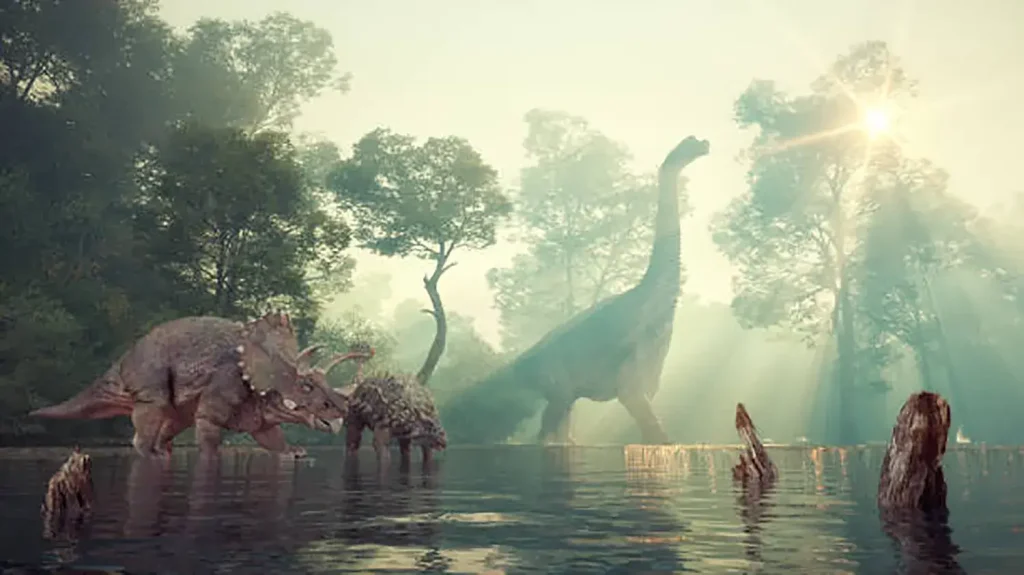The Giants of the Dinosaur World: Sauropodomorphs—Unveiling the Evolutionary Secret That Produced Earth’s Largest Creatures.
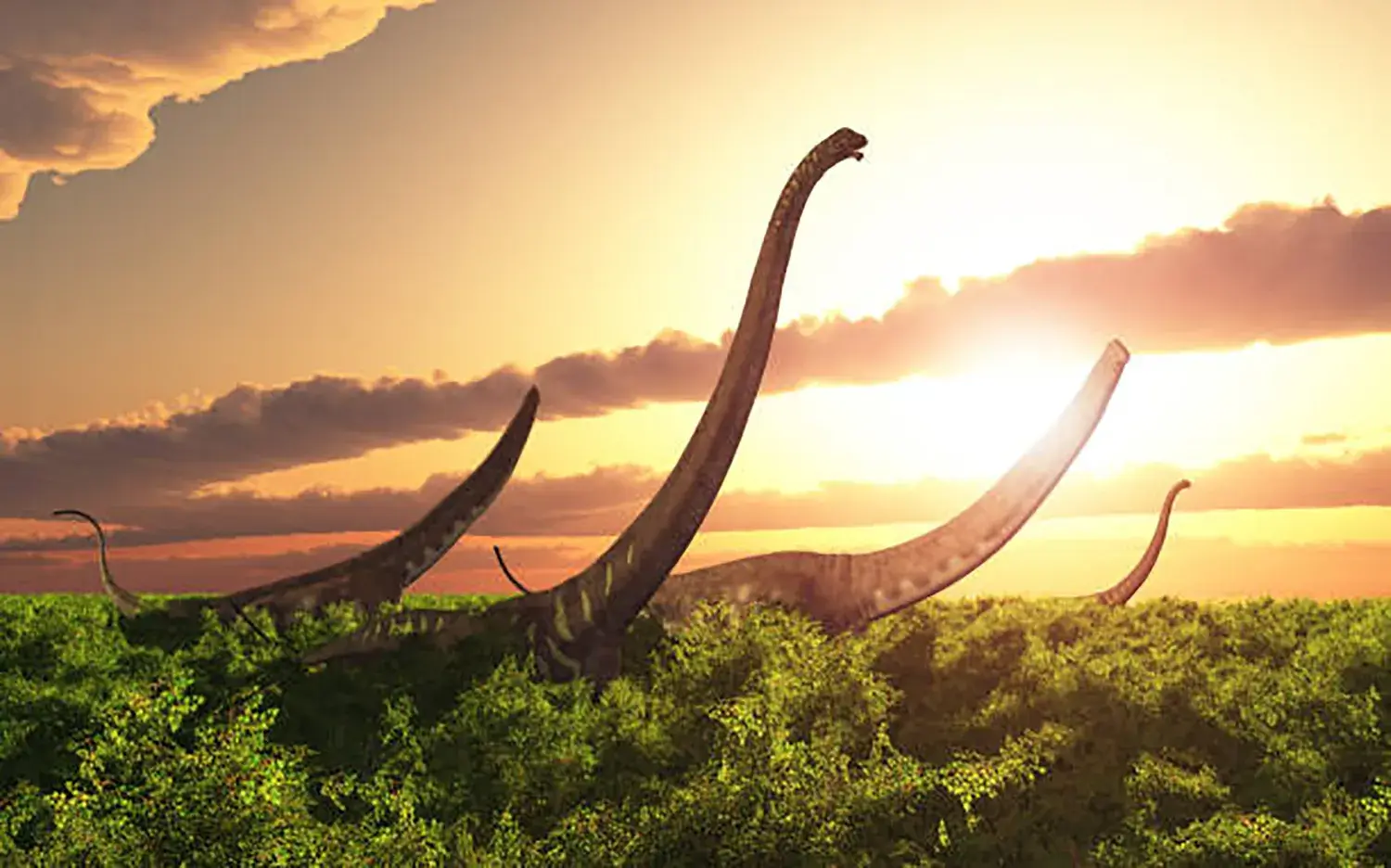
Sauropodomorpha is the group of dinosaurs characterized by a long neck and a small head relative to the body, represented by Brachiosaurus and Diplodocus.
They appeared in South America during the Late Triassic period and flourished across vast regions of the Earth from the Early Jurassic to the end of the Cretaceous.
This group is known for including the largest land animals in the history of our planet.
The Truth About the Two Groups that Constitute Sauropodomorpha
In their evolutionary process, Sauropodomorpha consisted of two major groups: Prosauropods and Sauropods.
While it was once thought that “prosauropods evolved into sauropods,” the prevailing theory today is that “both groups split from the same common ancestor.”
1. Prosauropods: Pioneers of Prosperity
Characteristics
This group includes species like Plateosaurus and lived from the Triassic to the Early Jurassic.
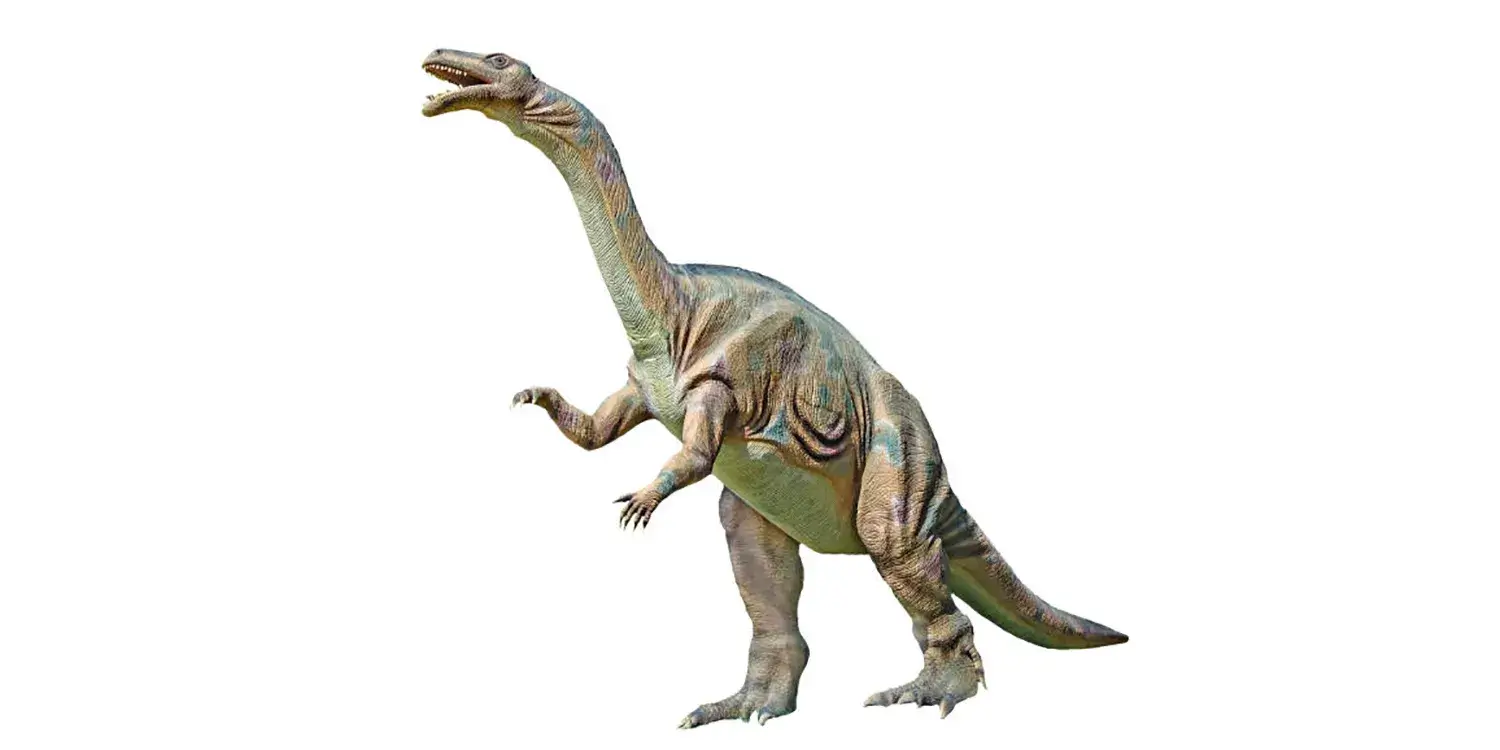
Plateosaurus
Many species were only a few meters long and are thought to have been bipedal or facultatively quadrupedal, with omnivorous or herbivorous diets.
Primitive Advantage
They succeeded in achieving gigantism early in the dinosaur age and constituted the majority of the dinosaur population at the time.
They possessed primitive, superior characteristics not seen in later sauropods, such as serrated teeth, sharp hand claws, and grasping fingers.
2. Sauropods: The Largest Giants in History
Characteristics
Represented by Brachiosaurus, Diplodocus, and Argentinosaurus, this group flourished greatly from the Jurassic to the Cretaceous periods.
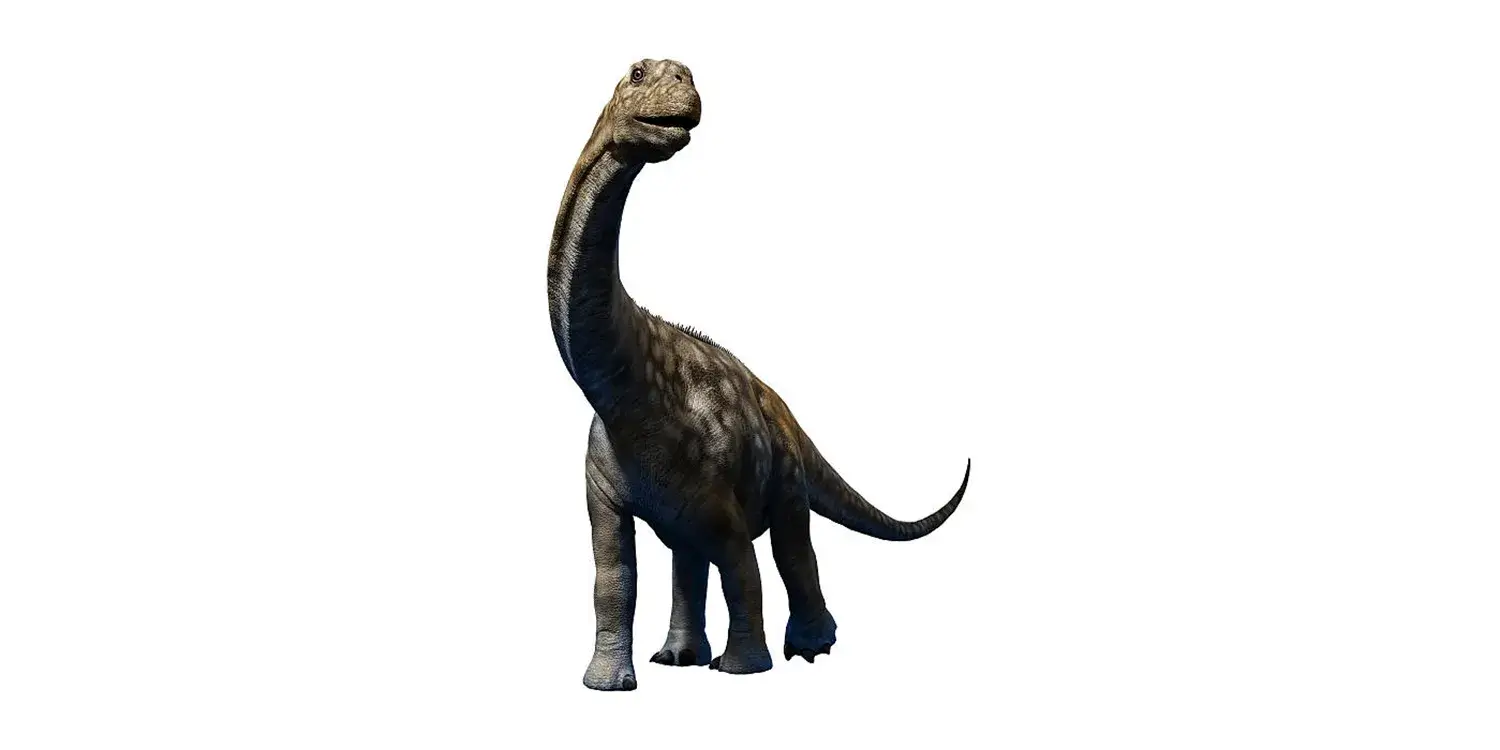
Argentinosaurus
All were herbivorous, and they walked on four robust legs to support their colossal bodies.
This group includes the largest land animals ever, sometimes reaching over 30 meters in length.
Characteristics and Evolutionary Secrets of Sauropodomorpha
Sauropodomorphs have captivated many people with their immense size and unique appearance.
1. The Role of the Unusually Long Neck
Their most defining characteristic is their extremely long neck.
This neck allowed them to feed on leaves high up, where no other animal could reach.
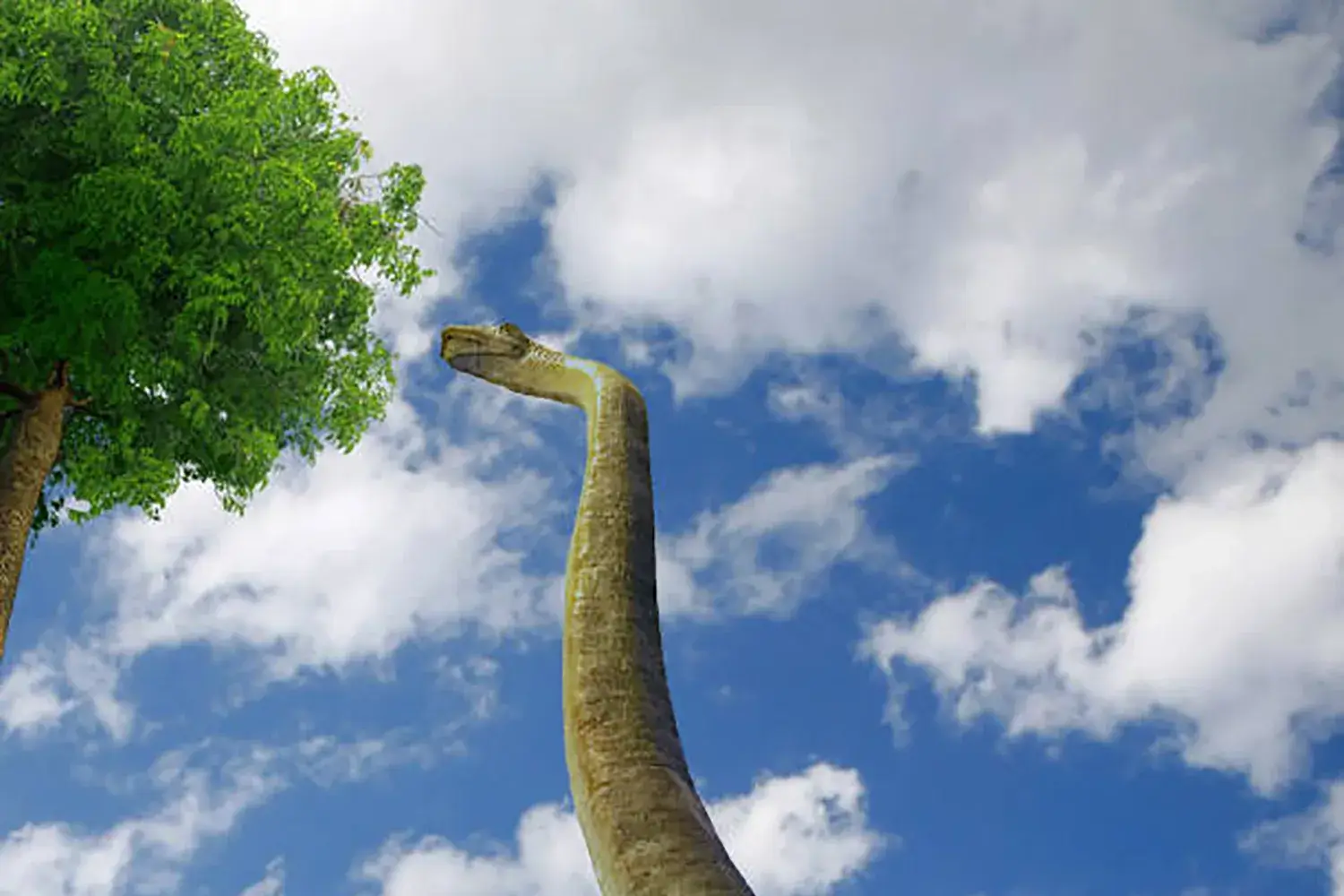
It could eat leaves from high positions.
Sauropods, in particular, had even longer necks than the prosauropods.
2. The Secret of the Gigantic Body and Skeleton
The largest creatures to have ever lived on land are all classified as Sauropodomorpha.
Their ancestors were bipedal, but they evolved into a quadrupedal posture to support their colossal size.
It is believed that as they grew to giant proportions, they developed air-filled bones (pneumatic bones), which reduced the burden on their legs and allowed them to support their immense mass.
3. Diet and Classification
All Sauropodomorpha were herbivorous and possessed specialized teeth and digestive systems adapted for eating plants.
They belong to the Saurischia (lizard-hipped) lineage, along with the theropods.
This classification was named for the structure of their pelvis, which resembles that of a lizard.
Through their magnificent appearance and evolutionary history, Sauropodomorphs symbolize the great diversity of the dinosaur age.

